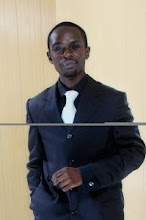
I think one of the best movies of 2006 was the biopic, "The Pursuit of Happyness". Based on the on the early life of a wall street success, Chris Gardner, it documents the tough patch he had to go through sometime in 1981 before he got his break at Dean Witter, a brokerage firm (by the way, great acting by Will Smith and his son, Jaden).
One of the most dramatic scenes in the movie was when he turned up for the job interview for an internship position at the firm, appearing slovenly with paint stains on his hair and clothes (actually he had just spent a night in prison after being arrested - when painting his apartment - for not paying his paying his parking tickets). At the end of the interview, the most senior executive on the panel asked him what he (i.e. Chris) would say if he learnt that the executive had hired a man who came for an interview without a shirt on.
What followed for me was the most beautiful few seconds of the entire movie. You could tell Chris was a bit taken aback by the question. But I think his response changed everything:
“He must have had some very nice pants on” (or words to that effect).
Needless to say Chris passed the interview.
I guess in life, we may possess these sort of “nice pants”, which differentiate us and more importantly, mitigate our shortcomings. For some it’s the quick wit they have about them, some uncanny ability to think on their feet. For others it’s a rare skill they possess which makes them invaluable to their audience. Yet for others, it is the ability to be known for something specific, to own an idea in the minds of everyone (think of Hernando de Soto and his "Mystery of Capital" or Nassim Nicholas Taleb and his "Black Swan" theory).
For successful brands (individuals, places or organizations), it could be that thing they are known for. That crucial differentiator. We can see evidence of such in great brands like Apple with their culture which builds loyalty the world over.






